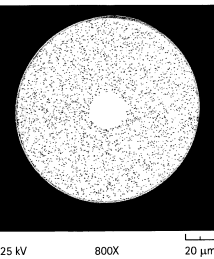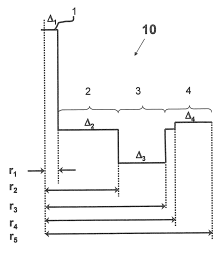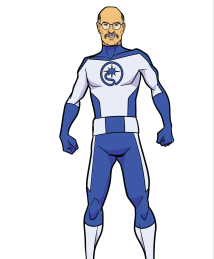Dana Bookbinder
"When having a little bit of humor and laughing you're very relaxed, so you're willing to try a lot of ideas that maybe if you're too tense, you wouldn’t necessarily try."
Dana Bookbinder, Ming-Jun Li and Pushkar Tandon invented bend-insensitive ClearCurve® optical fiber. Because this breakthrough technology can bend without significant signal loss, it can be used in locations where optical fiber installation was not previously possible, advancing data transmission across an array of industries.
Bookbinder was born in Providence, Rhode Island, in 1956. During his childhood, he attended a dozen different schools in Rhode Island, Massachusetts and Illinois. Everywhere he went, he was eager to meet new people with interesting and innovative ideas, and he maintained a sense of curiosity, a love of science, and a drive to take things apart and develop inventions. He often found old TVs, radios and appliances to take home and reassemble into something new.
“What I’ve always liked doing is making connections,” Bookbinder explained in an interview with the National Inventors Hall of Fame®. “It’s connections that lead to new inventions.”
Bookbinder earned his bachelor’s degree in organic chemistry from Northern Illinois University in 1978 and his doctorate in inorganic chemistry from the Massachusetts Institute of Technology in 1982.
Bookbinder joined GE Plastics in 1982 as a research and development scientist, where he invented and developed compact disc Lexan resin and high-performance polymers. He joined Corning Incorporated in 1991. Here, he began working with fellow researchers Li and Tandon, with whom he explored new optical fiber innovations.
Before optical fiber, copper wire was the standard means of transmitting phone calls and data over long distances. While copper uses electric current, optical fiber works by sending pulses of light. Because light travels in a straight line unless there is a way to steer it around a bend, optical fiber cables initially were most useful for long-distance data transmissions that ran straight cables from a central source to boxes outside of buildings, and data was then transmitted through conventional copper wires into homes and businesses. Any conventional fiber containing tight bends suffered from substantial signal loss. With their invention of bend-insensitive optical fiber, Bookbinder, Li and Tandon eliminated this problem.
Introduced by Corning in 2007, ClearCurve optical fiber could be bent around tight corners with significantly less signal loss. “We changed the optical design and the chemical structure [...] so when you bend the fiber, the light continues to travel within the fiber,” described Bookbinder. “It’s kind of magic.” Unlike copper wire, optical fiber is not vulnerable to electromagnetic interference and can transmit many orders of magnitude more data. One of the fun notes that Bookbinder likes to tell people is that YouTube today uses as much bandwidth in the blink of an eye (about 1/20 of a second) as the entire internet used in the year 2000 … and it’s all enabled by optical fiber.
Key to industries such as telecommunications and computer networking, bend-insensitive optical fiber has helped make video streaming services common in businesses and homes, and has enabled the growing demand for internet services including cloud computing and data storage. The technology opens up new possibilities in connections and communication for better learning and creativity in science, engineering, art, music, literature, medicine and business.
Bookbinder holds more than 300 U.S. patents and shares several distinguished awards for ClearCurve optical fiber with Li and Tandon. He retired from Corning in 2018 as a Corporate Fellow. Discussing the broad impact of bend-insensitive optical fiber, he said, "It's exciting to work on things that matter to people.”
To bring science concepts to life for children, Bookbinder created a chemistry magic show that has inspired audiences for more than 30 years. He also has visited children participating in the National Inventors Hall of Fame education program Camp Invention®, sharing valuable lessons and encouragement with the next generation of innovators.



